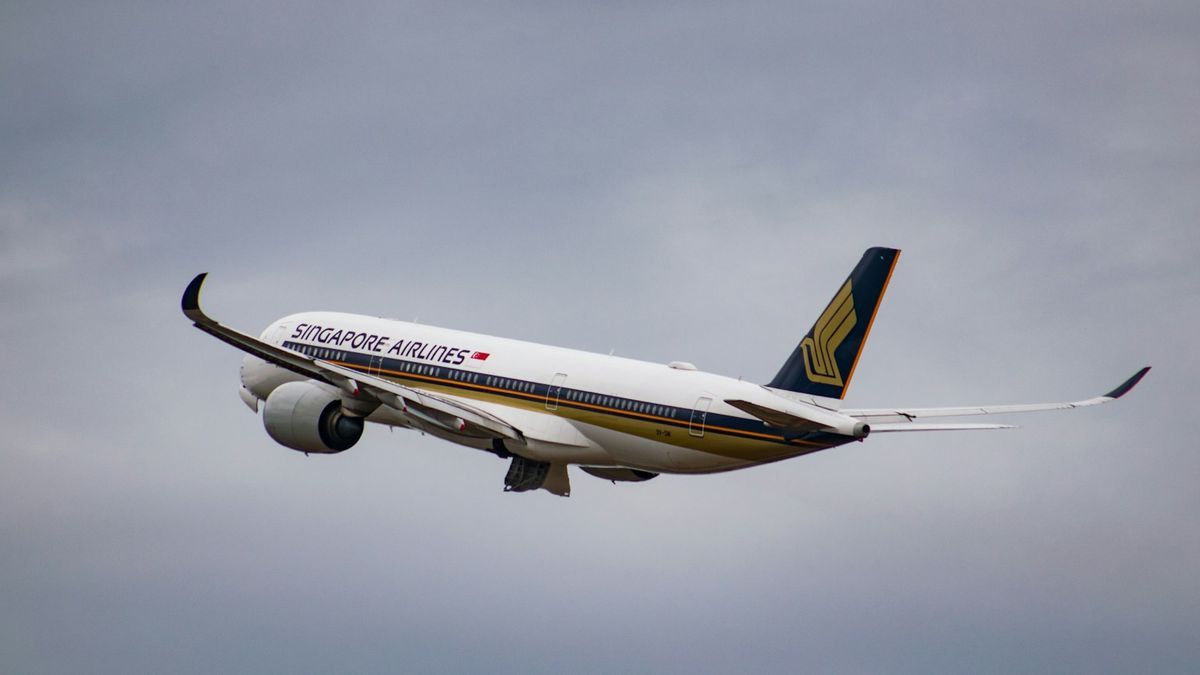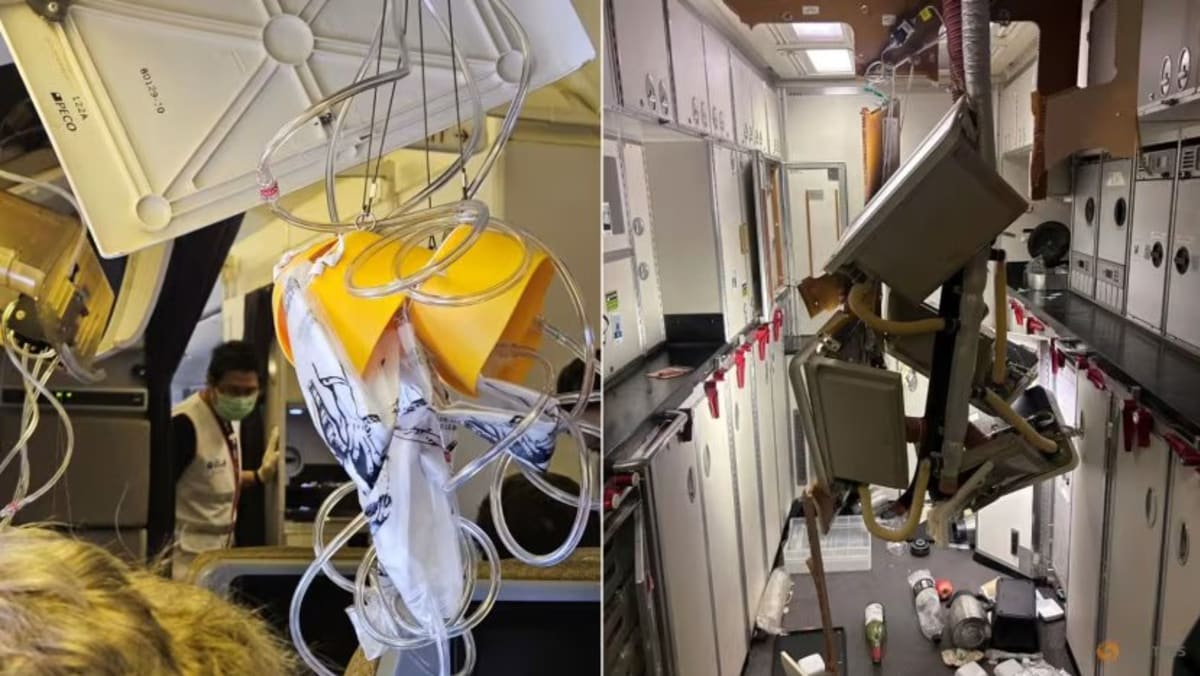Singapore Airlines Turbulence Incidents: Severe Turbulence Singapore Airlines

Severe turbulence singapore airlines – Singapore Airlines has a strong safety record, but it has experienced several severe turbulence incidents over the years. These incidents have resulted in injuries to passengers and crew members, and have raised concerns about the safety of the airline’s operations.
The following is a chronological list of severe turbulence incidents involving Singapore Airlines flights:
Incident 1, Severe turbulence singapore airlines
- Flight number: SQ368
- Date: 10 October 2000
- Route: Singapore to Sydney
- Severity of turbulence: Severe
The aircraft encountered severe turbulence while flying over the Indian Ocean. The turbulence caused the aircraft to drop suddenly, and several passengers and crew members were injured. The aircraft was able to land safely in Sydney.
The recent severe turbulence Singapore Airlines flight encountered is a stark reminder of the unpredictable nature of air travel. While such incidents are rare, they highlight the importance of being prepared for the unexpected. Much like the destructive power of iowa tornadoes , severe turbulence can cause significant damage and injuries.
Fortunately, in this case, the pilots were able to regain control of the aircraft and land safely, demonstrating the skill and professionalism of our aviation professionals.
Incident 2
- Flight number: SQ22
- Date: 26 March 2009
- Route: Singapore to Hong Kong
- Severity of turbulence: Severe
The aircraft encountered severe turbulence while flying over the South China Sea. The turbulence caused the aircraft to drop suddenly, and several passengers and crew members were injured. The aircraft was able to land safely in Hong Kong.
Severe turbulence on Singapore Airlines flights has been making headlines lately, but the recent greenfield tornado today is a reminder that severe weather can strike anywhere, anytime. While turbulence can be a frightening experience, it’s important to remember that it’s usually not a sign of imminent danger.
However, if you’re concerned about turbulence, be sure to talk to your pilot or flight attendant.
Incident 3
- Flight number: SQ345
- Date: 15 June 2015
- Route: Singapore to London Heathrow
- Severity of turbulence: Moderate
The aircraft encountered moderate turbulence while flying over the North Atlantic Ocean. The turbulence caused the aircraft to shake violently, and several passengers and crew members were injured. The aircraft was able to land safely in London Heathrow.
Turbulence, severe as it may be on Singapore Airlines flights, can evoke the fearsome spectacle of a greenfield tornado . The swirling vortex, a testament to nature’s wrath, mirrors the disorienting jolts and drops that can accompany air travel. Yet, amidst the chaos, Singapore Airlines pilots remain steadfast, their expertise a beacon of reassurance as they navigate the turbulent skies.
Causes of Severe Turbulence
Turbulence, often an unwelcome companion during air travel, arises from various meteorological and aircraft-related factors. Understanding these causes can help pilots anticipate and mitigate turbulence, ensuring a smoother and safer flight experience.
Meteorological conditions play a significant role in generating turbulence. Thunderstorms, with their towering cumulonimbus clouds, are notorious for creating severe turbulence. Within these storms, updrafts and downdrafts collide, producing powerful vertical air currents that can toss aircraft around like leaves in a whirlwind.
Jet streams, high-altitude rivers of fast-moving air, can also contribute to turbulence. When aircraft fly through or near jet streams, they encounter significant wind shear, which can cause the aircraft to bounce and jolt. Atmospheric instability, characterized by large temperature differences between air masses, can lead to convective turbulence. As warm air rises and cold air sinks, it creates unstable air currents that can result in sudden and unpredictable turbulence.
Passenger Experiences
Severe turbulence on Singapore Airlines flights can be a harrowing experience for passengers. The physical and emotional effects can range from mild discomfort to serious injuries and anxiety.
Firsthand Accounts
“I was on a flight from Singapore to London when we hit a patch of severe turbulence,” said one passenger. “The plane dropped suddenly, and I was thrown from my seat. I hit my head on the overhead compartment and was knocked unconscious.”
“When I woke up, I was in a hospital bed with a concussion and a broken arm,” the passenger continued. “I’m still recovering from my injuries, but I’m grateful to be alive.”
Another passenger described the emotional effects of turbulence: “I was terrified,” she said. “I thought the plane was going to crash. I was crying and holding on to my seat for dear life.”
“After the turbulence subsided, I was still shaking,” she continued. “I couldn’t believe what I had just been through.”
Safety Measures
Singapore Airlines prioritizes the safety of its passengers and crew, implementing stringent safety protocols and procedures to minimize the risks associated with severe turbulence.
The airline utilizes advanced weather forecasting systems to monitor weather conditions along flight paths, allowing pilots to anticipate potential turbulence and adjust their flight plans accordingly.
Turbulence Detection Systems
Singapore Airlines aircraft are equipped with sophisticated turbulence detection systems that provide real-time information about the severity and location of turbulence ahead. These systems alert pilots, enabling them to take evasive maneuvers or adjust their flight path to avoid areas with severe turbulence.
Severe turbulence on Singapore Airlines flights has been making headlines recently, but it’s important to remember that even more powerful and destructive forces of nature exist. The recent Iowa tornadoes , for example, were a stark reminder of the devastation that can be wrought by extreme weather events.
While turbulence on an airplane can be frightening, it’s essential to keep in mind that it’s a relatively minor inconvenience compared to the catastrophic damage that can be caused by tornadoes and other severe weather phenomena.
Pilot Training
Singapore Airlines pilots undergo rigorous training to prepare them for handling severe turbulence. This training includes simulator exercises that simulate various turbulence scenarios, equipping pilots with the skills and knowledge to respond effectively in real-world situations.
Passenger Compensation and Support
In the unfortunate event of severe turbulence on a Singapore Airlines flight, the airline has established policies and procedures to compensate and support affected passengers.
Severe turbulence recently rocked a Singapore Airlines flight, causing injuries to passengers and crew. The turbulence was so intense that it caused the plane to drop several thousand feet in altitude. The Greenfield, Iowa tornado of 2004 was a similarly powerful event, causing widespread damage and injuries.
In both cases, the extreme weather conditions put the lives of those on board at risk. While the Singapore Airlines flight was able to land safely, the Greenfield tornado left a trail of destruction in its wake. Both incidents serve as a reminder of the unpredictable nature of weather and the importance of being prepared for the unexpected.
Singapore Airlines understands the distress and inconvenience that turbulence can cause, and is committed to providing fair compensation and support to passengers who have been injured or inconvenienced.
Compensation
Passengers who have been injured due to severe turbulence may be eligible for compensation from Singapore Airlines. The amount of compensation will depend on the severity of the injury and the medical expenses incurred.
In addition to compensation for injuries, passengers who have been inconvenienced due to severe turbulence may also be eligible for compensation for lost luggage, damaged property, or missed flights.
Support Services
Singapore Airlines provides a range of support services to passengers who have been affected by severe turbulence. These services include:
- Medical assistance
- Counseling
- Accommodation
- Transportation
Singapore Airlines is committed to ensuring that passengers who have been affected by severe turbulence receive the support and assistance they need.
Industry Comparisons
Singapore Airlines has consistently maintained an excellent safety record, with no fatal accidents or hull losses due to severe turbulence in its history. This exemplary performance is attributed to a combination of factors, including rigorous maintenance procedures, advanced aircraft technology, and highly trained pilots.
When compared to other major airlines, Singapore Airlines ranks among the safest in terms of severe turbulence incidents. According to data from the Aviation Safety Network, Singapore Airlines has had only a handful of reported severe turbulence incidents in the past decade, with no fatalities or serious injuries.
Industry Best Practices and Innovations in Turbulence Management
The aviation industry has made significant advancements in turbulence management, with airlines implementing various best practices and innovations to enhance passenger safety and comfort during turbulent flights.
- Real-time Turbulence Detection and Avoidance Systems: Modern aircraft are equipped with advanced weather radar and turbulence detection systems that provide real-time data on turbulence intensity and location. This allows pilots to adjust their flight paths to avoid areas of severe turbulence.
- Predictive Turbulence Models: Airlines are also utilizing predictive turbulence models that use historical data and weather patterns to forecast areas of potential turbulence. These models help pilots plan their flight routes accordingly and make informed decisions to minimize passenger discomfort.
- Pilot Training and Simulation: Airlines invest heavily in pilot training and simulation programs that focus on turbulence management. Pilots undergo rigorous training to develop the skills and knowledge necessary to handle turbulence effectively and ensure passenger safety.
Future Trends

Emerging technologies and advancements have the potential to revolutionize the prediction and mitigation of severe turbulence in the aviation industry. Artificial intelligence (AI), enhanced weather forecasting models, and innovative aircraft designs are poised to significantly improve safety and comfort for passengers.
Artificial Intelligence
AI-powered algorithms are being developed to analyze vast amounts of data from weather sensors, aircraft systems, and historical flight patterns. These algorithms can identify patterns and predict turbulence with greater accuracy and lead time, enabling airlines to adjust flight paths and take proactive measures to minimize passenger discomfort.
Weather Forecasting Models
Advancements in weather forecasting models are improving the accuracy and resolution of turbulence predictions. High-resolution weather models can now simulate atmospheric conditions at finer scales, providing more detailed information about turbulence intensity and location. This allows airlines to plan flight routes that avoid or minimize exposure to severe turbulence.
Aircraft Design
Aircraft manufacturers are exploring innovative design features to enhance turbulence resistance. Flexible wings, active control systems, and advanced materials can reduce the impact of turbulence on the aircraft, providing a smoother and more comfortable ride for passengers.